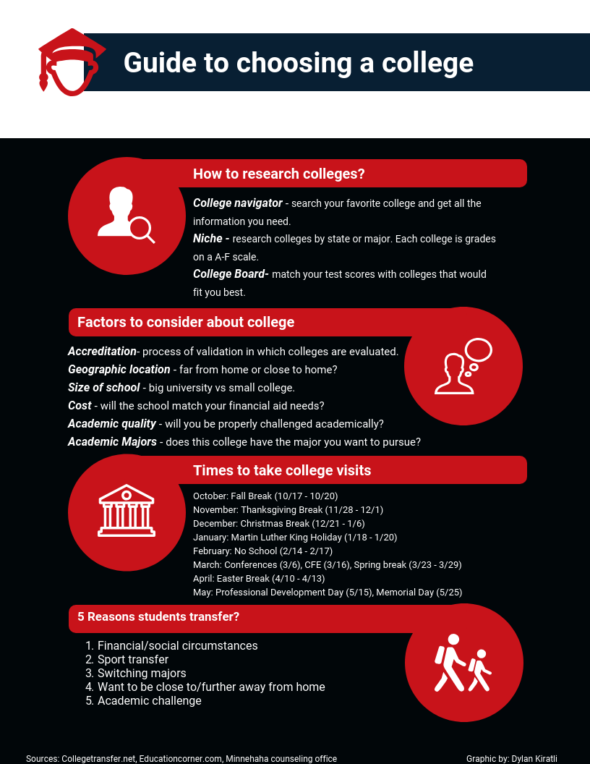What is included in the Common Application?
Approaching the midpoint of the first semester, students are working hard to meet their college application deadlines. For many who are applying under “early action” or “early decision,” the most common deadlines are Oct. 15, Nov. 1, Nov. 15 and Dec. 1.
By applying “early action” or “early decision,” students are notified in mid-December if they got accepted, deferred or declined to the colleges they applied to.
The other popular decision is to apply under the “regular decision” deadline which students are allowed to apply to the college anytime after the early application deadlines.
The common app allows students to apply to many different schools at a time with the same application instead of having to fill out a separate application for each school. It started out as a 15 institution application in 1975 and has now turned into a 900+ institution application.
The common app requires the applicant to submit their academic record, test scores, activities, honors and demographic information. According to commonapp.org, they “make the application simple, the process logical, and the experience joyful.”
Many students would argue with the previous statement about the experience being joyful but would agree that the application is fairly simple.
The education section of the common app includes an overview of the applicant’s academic record and college preference.
A select list of schools even require applicants to include self-reported transcript information in their admissions and enrollment management processes. These grades that are reported through the common app are based on performance in an applicants freshman through junior year.
Another part of the common app pertains to the applicants test scores. The test scores are standardized tests: ACT and SAT. The main similarity that the two share is the sections it offers. The three sections that they share are english (writing & language), reading and mathematics.
A few main differences include the scoring scale, time provided and the ACT has a science section. A recent addition to common app is a self reported test score.Students are able to truthfully report their score on the common app and when accepted to a school the applicant must then officially report their test scores.The next section on the common app is the activities section. Activities that applicants are able to report include arts or music, clubs, community engagement, family responsibilities, hobbies, sports, work and volunteering. Creating and maintaining a detailed resume is important in order to fill out the activities section of the common app.
The final section of the common app makes the applicant provide family information. This section requires information about household situation, parent 1, parent 2 and siblings.
What is holistic review?
Holistic review is an admission decision based on an overall assessment of the students performance, as well as the additional information of the application. According to several schools who use the holistic review process, the sections of the application are equally balanced.
“You might have a 4.0 but if you never took an A.P. class or challenged yourself, a college is maybe going to frown upon that,” said counselor Christine Paton.
Factors of consideration?
The many different sections of information required for common app are split into primary and secondary factors (consideration).
The primary factors that many colleges consider are GPA, strength of curriculum and test scores. Depending on the college in which the applicant is applying to, the primary and secondary factors can vary.
Tests scores are primary factors when applying to a large college or university because the admissions representatives aren’t able to review each application as closely compared to those at small colleges.
Secondary factors in the common app include essays, extracurriculars and legacy. Another secondary factor is test scores when applying to a small college where the college admissions reps can read essays and get to know the applicant better.
Balance your schools
Creating a good balance of safety, likely and reach schools is very important in the college application process.
A student who only applies to only reach schools might not get accepted into a single one which would leave them scrambling to find an alternate school to apply to.
On the other hand, a student who only applies to likely schools might not be challenging themselves enough.
“I had a student who didn’t even know where the school was and it was on their list,” said Paton.
Having six-to-eight schools is an ideal number when applying. Out of those schools, two or three should be safety schools, three or four should be likely schools, and only a couple should be reach schools.
Being set on one specific school can be tempting, but it is important to have several backup schools in case that school doesn’t work out.


